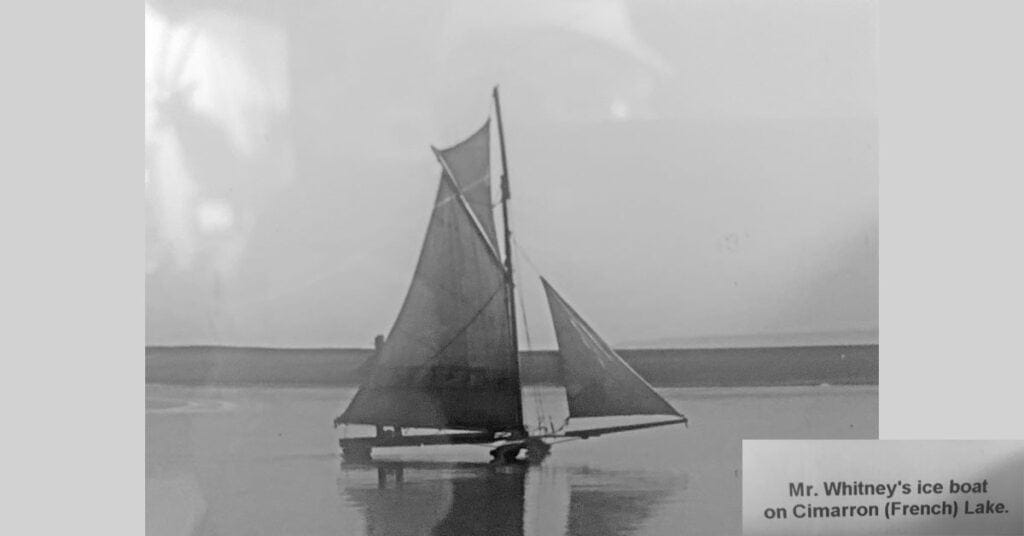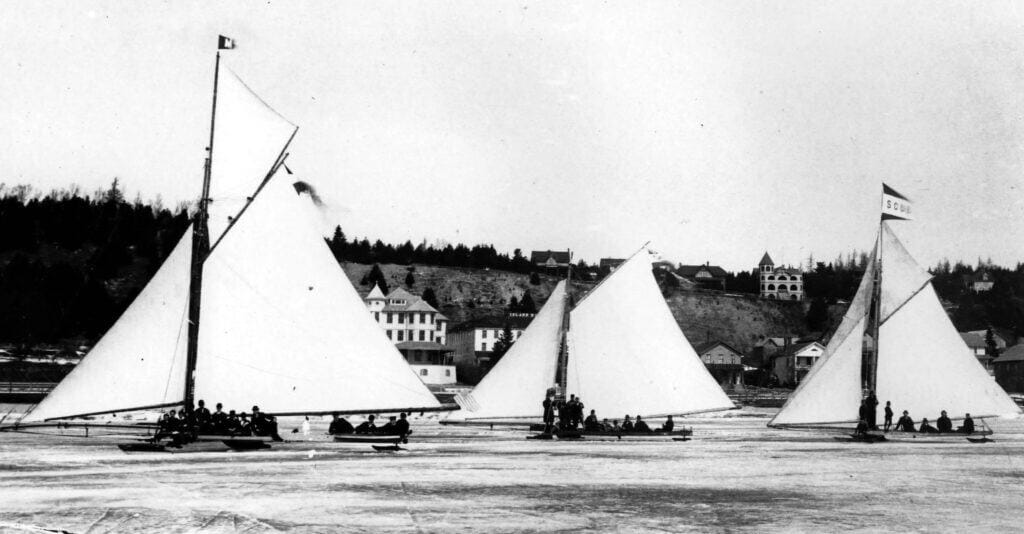
When 4LIYC Nite sailors Lars Barber and Brad Wagner hit the road for land or ice sailing events, they don’t just set the cruise control and blast down the highway. These two turn every road trip into a treasure hunt—stopping at flea markets, poking around small towns, and always keeping an eye out for something unusual. On their return from the 2025 Blokart North Americans, they pulled into a hotel in Cimarron, New Mexico—and sure enough, Lars spotted something unexpected: an old black-and-white photo of a stern steerer iceboat hanging on the wall with the caption: “Mr. Whitney’s ice boat on Cimmeron (French) Lake.”
New Mexico isn’t typically known for iceboating, but French Lake, situated in the Sangre de Cristo Mountains near Cimarron, is located at an elevation of about 6,300 feet. At this altitude, small lakes can freeze during the winter.
Using old newspaper and genealogy archives, I tracked down “Mr. Whitney.” He was Frederic Whitney, born in 1879 in Iowa. His father and ancestors were from Maine, so he possibly brought that knowledge with him when he moved west. During his time in New Mexico in the early 1900s, Whitney became a prominent local figure. One article even noted that he had installed a tennis court at his ranch, showing his passion for sports and outdoor life. Later in life, he moved to Alaska and died on the Kenai Peninsula in 1978 at 99.
Though I couldn’t find any specific record of Whitney iceboating, I sent the photo to iceboating sailmaker and historian Henry Bossett to get his take. Henry pointed out that Mr. Whitney appears to be sailing while standing up—an unusual style. (Perhaps a windless day?) He also noted the rig features a jib-headed topsail, a small triangular sail used on gaff rigs and set between the gaff and the mast. In the sport’s early days, some iceboaters repurposed their summer sailing rigs and mounted them on iceboat frames. Henry shared a historical example of a similar setup, included below.
While we may never learn much more about Frederic Whitney’s brief moment on the ice at French Lake, it remains another interesting footnote in the unexpected history of ice sailing.



